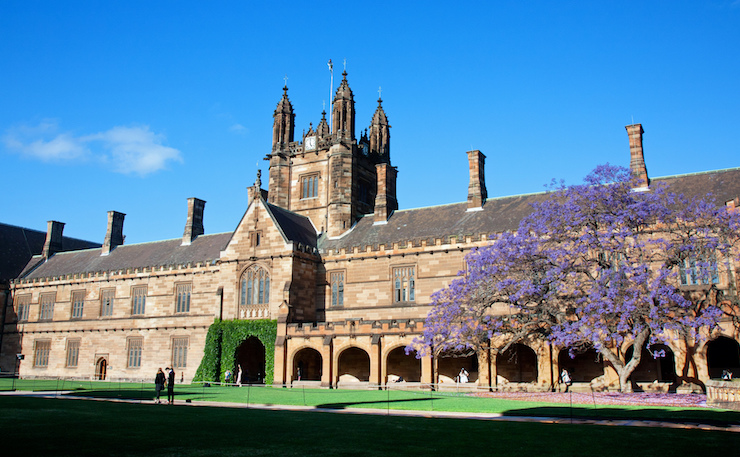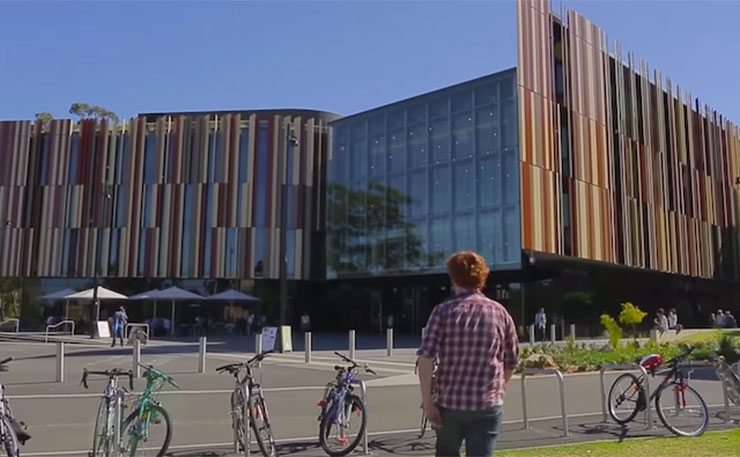The conservative attacks on higher education continue, with the poorest Australians being asked to contribute the most, write Richard Hil and Kristen Lyons.
Over the last few decades, successive governments have set in train education policies to privatise and corporatise higher education. The outcome has disadvantaged Indigenous, regional and remote, low socio-economic and women students, and is part of a broader sustained attack on Australia’s poor.
The Federal Government’s latest $2.8 billion proposed cuts to higher education over four years is part of this ongoing attempt to privatize the sector. In championing the neoliberal maxim of privatizing profits and socializing losses, the government is driving the transfer of education costs from the state to the ‘consumer’.
While the Turnbull government was unable push through its earlier plans for complete university fee deregulation, the latest moves appear as a compromise position. With fee payers expected to pick up the tab, it’s the most vulnerable students who will carry the disproportionate burden. This comes on the back of earlier attacks, including cuts to program funding specifically designed for students from poorer backgrounds.
This all points to the targetting of those who can least afford to pay for their education. And while the government refers to its latest incision as an “efficiency dividend”, it’s actually a euphemism for more draconian cuts that will further deepen the financial problems basseting many universities, as well as further exacerbating structural inequality across the sector.
There are additional measures in the budget that demonstrate the trajectory of the government’s thinking. For instance, in forcing students to start repaying debts once their salaries reach $42,000, rather than the current threshold of $54,126 – in other words, just above the minimum wage – students will hit the debt ceiling much earlier, making saving for a home, or anything else for that matter, just about impossible.
Tellingly, many contracted and casual university teaching staff, including large numbers with PhDs, already earn little more than this threshold. They too may find themselves re-paying debts while subsisting on very low incomes as they seek to educate the next generation of indebted students.
And given women’s lower on average income earnings, including the substantial gender pay gap, women will be especially impacted by this reduced repayment threshold.

In stark contrast, the majority of Coalition front-benchers backing this change have avoided paying university fees, including Treasurer Scott Morrison, who completed part of his science degree at the University of New South Wales at a time when university education was free.
Despite benefiting directly from free and/or low cost education – something which has no doubt assisted their own career pathways – members of the current government intend to make sure today’s students do not get the same ‘free lunch’.
The media’s go-to ‘expert’ on higher education, former Howard government adviser, and member of Simon Birmingham’s higher education advisory panel, the Grattan Institute’s Andrew Norton, is the chief proponent of the lower income threshold.
He has argued – persuasively it seems – that encouraging students to repay their HELP loans will contribute an additional $500 million to government coffers. Norton considers the salary threshold reasonable, and confidently maintains that “no hardship” will be caused to students.
How on earth does he know this? Is he aware of household costs, and the fact that wage increases are now below the inflation rate? And what does he know about the realities of living on a low income in today’s Australia, including in particular the unique pressures that face Indigenous, women, rural, remote and poor students living away from home?
Perhaps we can also remind Norton and his colleagues that students already contribute the sixth highest level of fees among all OECD countries, at the same time that Australia ranks second lowest in terms of GDP invested in tertiary education. This disparity further highlights the effects of the user-pays model that this government and other advocates of marketised education so heartily applaud.
While championing this system, no mention is made by Norton, or anyone in government, of cutting vice chancellors’ salaries, nine of whom receive more than $1 million per annum, thereby representing some of the highest VC salaries in the world. Nor do they point to the army of senior managers and management consultants on similarly stratospheric levels of remuneration. And nor for that matter, is any mention made of a progressive system of taxation to help fund higher education (as happens in many countries around the world), clawing back moneys secreted in offshore bank accounts, reducing the tax cuts granted to the nations’ wealthiest companies, or reducing the hefty subsidies granted to the fossil fuel industry.
Rather, universities are being treated as the repositories of “bad debt” whose business models are yet to be fully attuned to the requirements of the neoliberal economy.
The measures announced in the budget will increase student fees almost immediately, and keep lifting them over the next few years. Despite Norton’s insistence that the cuts will be good for students and the university sector, critics have been quick to draw attention to the increased burden placed on students and their families, many of whom, as noted in a 2012 study by the University of Melbourne’s’ Centre for the Study of Higher Education, are already on or below the poverty line.

At some point, the law of diminishing returns will set in. Given the calculus that links costs with quality and outcomes, it may not be possible to continue increasing student fees without an eventual drawdown – more student attrition and dropouts.
Indeed, of the over 12,000 students surveyed by the CSHE, two-thirds fretted over their financial circumstances, with those from poor and indigenous families faring the worst, a finding recently endorsed by none-other than Universities Australia, which noted over three quarters of low socio-economic, and four out of five Indigenous students, reported financial distress.
Many of these students were unable to afford rent, or to eat properly, and significant numbers dropped out of university altogether, citing poverty and hardship as the main reasons. That Indigenous students will be particularly disadvantaged in terms of access to university in the face of increasing fees also flies in the face of Universities Australia’s commitment, displayed in ambitious targets, to improve entry and completion of studies for Aboriginal and Torres Strait Islander students.
Such aspirations, quite frankly, will remain just that if this government has its way, given that Indigenous students will be increasingly excluded from a costly privatized university system.
The fightback
Burdened by more and more fees and charges, as well as other cost of living pressures, many students, including those who protested Minister Birmingham’s recent Press Club address, have taken to actively oppose the governments’ higher education policies – as have hundreds of thousands of similarly impacted students across the globe, including in Chile, Germany and Canada.
They do so because of growing fears over personal debt levels, perceptions of diminishing education standards, caused in large part by repeated cuts to public expenditure, and a more generalised opposition to neoliberal education.
The rationale for increasing university fees has been that university education delivers higher incomes for graduates, who should therefore contribute individually to the cost. This is a spongy argument that ignores changes in the labour market, and the way in which massification of university education diminishes the relative value of a degree.
Importantly too, it ignores the public benefit of an educated population. Despite these flaws, the government has sought to justify the commercialization and privatisation of higher education, as well as the narrowing of curricula, in its bid to make universities more ‘relevant’ to the economy.
While students will be financially squeezed by recent budget measures, they’ll also be disadvantaged in others ways. For example, in response to cuts laid out in the budget, the University of Queensland’s Vice Chancellor has warned that international students – university ATMs – may be prioritised ahead of domestic student enrolments to ensure greater income generation and the cross-subsidization of research.
Is the Turnbull Government cruel and short-sighted in pursuing this agenda? Perhaps. After all, it has already funded private schools at an extraordinary level when compared internationally; and hopes to privatize health insurance and cut the welfare budget.
Despite cloaking its 2017 budget in market-researched slogans like “fairness”, it’s clear the government’s agenda tips the emphasis on “budget repair” onto the shoulders some of the poorest in Australia. Yet putting university education out of reach for many would also be consistent with the broad philosophy of government by the privileged, for the privileged. This is the new normal in Australia.

The commercialization of higher education and the vocationalisation of curricula are aimed at addressing economic imperatives. In the longer run, this has helped destroy confidence in universities as institutions serving the public interest, and the common good. Private interest has superseded the social.
But there is an extra edge to the right-wing attitude to universities. Traditionally, the more privileged classes in society were the conservative parties’ voting base. But in survey data, university education now seems to upset this familiar electoral correlation, with higher levels of education correlating with less likelihood of voting for conservative political parties. University staff and students have also been an important source of resistance to racism, sexism, and environmental recklessness. The Howard government acted directly to disrupt this university culture, using its financial power to undermine student unions. Universities remain a problem for neoconservatives, many of whom continue to see them as hotbeds of left-wing radicalism.
The government must surely be happy then, to see universities taken over by corporate-style managers: their back-door approach to privatization is making that possible. They have also had a hand in ensuring that research follows the same corporate-led direction.
Tony Abbott’s attack on environmental science, including championing the bid to allocate $4 million toward the establishment of the Consensus Centre under the leadership of renowned climate sceptic Bjorn Lomborg, is just one example of this. Meanwhile, Prime Minister Turnbull – following in the footsteps of John Howard – is seeking to turn Australia’s research effort towards “innovation”; that is, applied research for corporate profit.
Yet there is nothing inevitable about any of these moves toward privatisation of the university sector. They are driven by ideology.
Australia is a rich country, and should therefore be able to make more equitable choices about higher education, just as we do about infrastructure (up $75 billion over 10 years) and defence (up to a staggering $42 billion by 2021).
Like Germany, we could abolish tuition fees entirely and have a solid public university system. Or, like Britain and the US, we could jack up fees and have a grossly class-based educational system. We are currently moving in the second direction, under a government that cares little about precarious labour and the next generation’s despair.
This budget must be read for what it is; an attack on young people and future generations; especially the poor, Indigenous, women, and rural and remote students.
In this context, it is little wonder that so many young people are turning away from a political system they see as failing them.
Donate To New Matilda
New Matilda is a small, independent media outlet. We survive through reader contributions, and never losing a lawsuit. If you got something from this article, giving something back helps us to continue speaking truth to power. Every little bit counts.






